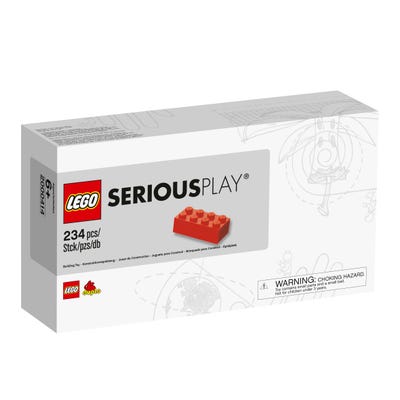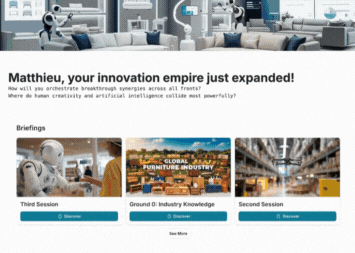Summary:
Business simulations vary in complexity to suit different learning objectives. Simple simulations, like the Beer Game and LEGO Serious Play, effectively teach fundamental concepts through clarity and accessibility. However, complex simulations are crucial for preparing participants for real-world challenges by mimicking intricate dynamics and pressures. The choice between simplicity and complexity depends on the learner's experience and the specific skills needed, with the most effective approach often blending both to match learning goals and real-world demands.
We get this question a lot at Strategy Quest: "Why make business simulations complex when simple ones work just fine?"
It's a fair challenge. After all, some of the most beloved business learning tools are beautifully simple. The Beer Game teaches supply chain dynamics with just four roles and basic ordering decisions. LEGO Serious Play unlocks strategic insights through colorful bricks. Paper airplane factories demonstrate lean manufacturing in under two hours.
So why do we put participants through the wringer with shifting market dynamics, political stakeholders, and cascading strategic consequences?
Because we're not trying to teach concepts. We're preparing people for reality.
The Beauty of Simple: When Less Really Is More
Let's give credit where it's due. Simple simulations are learning design at its finest. They strip away noise to reveal fundamental truths.

Take the Beer Game (and no, it doesn't involve drinking). Four players. One supply chain. Simple rules. Yet every group (from MBA students to senior executives) creates the same dysfunctional patterns that plague real supply chains. The bullwhip effect emerges naturally, without a single PowerPoint slide explaining it.
That's the magic of simplicity: when you remove distractions, principles become visible.
LEGO Serious Play works on similar principles. By reducing complex organizational challenges to physical models, it bypasses our tendency to overthink. Participants often surprise themselves with insights that emerge through their hands rather than their heads.
These approaches excel at:
- Conceptual clarity - One lesson, learned deeply
- Universal accessibility - No prior knowledge needed
- Rapid deployment - Learn in hours, not days
- Safe exploration - Low stakes enable bold thinking
The Case for Complexity: When Reality Can't Wait
But here's where things get interesting.
What happens when you're not learning abstract concepts but preparing for specific, high-stakes realities? When the cost of learning on the job could tank a product launch or derail a transformation?
This is where complex simulations earn their keep.
Think about it: Would you want your pilot learning to handle emergencies through paper airplanes? Would you trust a surgeon who only practiced on simplified diagrams?
Business strategy might not involve life-or-death decisions (usually), but the stakes are real. A mismanaged innovation portfolio can waste millions. A poorly navigated political landscape can kill transformative ideas. A misread market signal can hand victory to competitors.
Complex simulations prepare you for this reality by recreating its essential dynamics:
- Multiple variables interacting - Just like real strategy
- Time pressure and incomplete information - Because perfect data is fantasy
- Stakeholder politics - The hidden game within the game
- Competitive responses - Markets that push back
- Unintended consequences - Where second-order effects bite hard
The Cognitive Load Dilemma
Here's where the research gets fascinating. There's this thing called Cognitive Load Theory that explains why both approaches can work (or fail) spectacularly.
Simple simulations work by reducing "extraneous" load (the mental effort spent figuring out how the simulation works) so you can focus on "intrinsic" load (actually learning the concept). It's like clearing your desk before tackling a complex problem.
Complex simulations take a different bet. They intentionally increase cognitive load to match real-world demands. The theory? If you can handle the complexity in simulation, you're ready for reality.
But there's a tipping point. Too much complexity and people stop learning and start just surviving. They're so overwhelmed managing details that they miss the deeper patterns.

The Experience Factor Nobody Mentions
Here's something the research confirms that we see constantly: Your optimal complexity depends on where you are in your journey.
Novices benefit more from simple simulations. They need to build mental models before they can handle nuance. It's why we don't throw first-year medical students into emergency room simulations.
But experienced professionals? They need complexity to stay engaged and continue growing. Simple simulations can actually frustrate experts because they know reality isn't that clean.
This creates an interesting challenge for organizational learning. Your innovation team includes both newcomers and veterans. What works for one might fail for the other.
The "Sweet Spot" Is a Moving Target
The most effective approach might not be choosing between simple or complex, but knowing when to use which or how to blend both.
Progressive complexity makes sense: Start simple to establish foundations, then layer in realism as competence grows. It's how video games work, how martial arts are taught, how musicians develop.
But there's another approach we find powerful: Selective complexity. Instead of making everything realistic, you carefully choose which elements to simplify and which to preserve in full complexity.
At Strategy Quest, we simplified away the mundane (no expense reports!) but preserved the complexity that matters:
- Strategic decision cascades
- Stakeholder relationship dynamics
- Competitive market responses
- Innovation portfolio tensions

The Transfer Problem
Here's the million-dollar question: Does what you learn in simulation actually transfer to real life?
Research shows simple simulations excel at "near transfer" (applying learning to similar situations):
Learn supply chain dynamics in the Beer Game, recognize them in your actual supply chain.
Complex simulations show advantages for "far transfer"(applying learning to different contexts):
Navigate political dynamics in simulation, handle them better in any organization.
But here's the kicker: transfer isn't automatic with either approach. It requires:
- Active reflection - Making connections explicit
- Practice variation - Different scenarios, similar principles
- Real-world anchoring - Linking simulation to actual challenges
- Social processing - Discussing insights with peers
So Which Is Better?
After diving deep into the research and running hundreds of simulations, here's our take:
Neither simple nor complex simulations are inherently superior. They're different tools for different jobs.
Use simple simulations when you need to:
- Introduce new concepts
- Build shared vocabulary
- Create "aha" moments
- Enable rapid iteration
- Include diverse expertise levels
Use complex simulations when you need to:
- Prepare for specific challenges
- Practice integrated decision-making
- Build judgment under pressure
- Assess readiness for roles
- Develop strategic intuition
The Strategy Quest Stance
We chose complexity because our participants face complexity. They're not learning what innovation or their business unit is. They're learning how to lead it in messy, political, resource-constrained environments.
But we also learned from simple simulations. We strive for elegant complexity: realistic enough to matter, focused enough to learn.
Every element in our simulation serves a purpose:
- Market dynamics teach strategic timing
- Stakeholder management builds political capital
- Resource constraints force real tradeoffs
- Competitive moves create urgency
It's not complex for complexity's sake. It's complex because innovation leadership is complex, and pretending otherwise doesn't help anyone.
The Bottom Line
The best simulation isn't the simplest or the most complex. It's the one that matches your learning goals, your audience's readiness, and your real-world challenges.
Sometimes that's building strategy with LEGO bricks. Sometimes it's navigating a multi-stakeholder innovation crisis with markets shifting beneath your feet.
The key is being intentional about which you choose, and why.
Because in the end, whether simple or complex, a simulation is just a practice field. What matters is whether it prepares you for the game you actually need to play.




